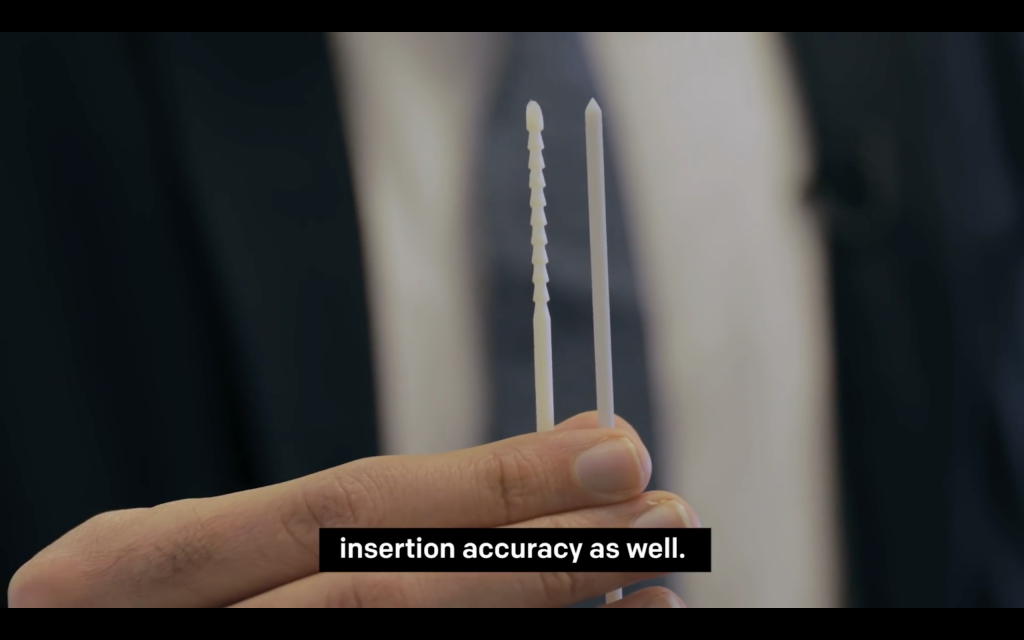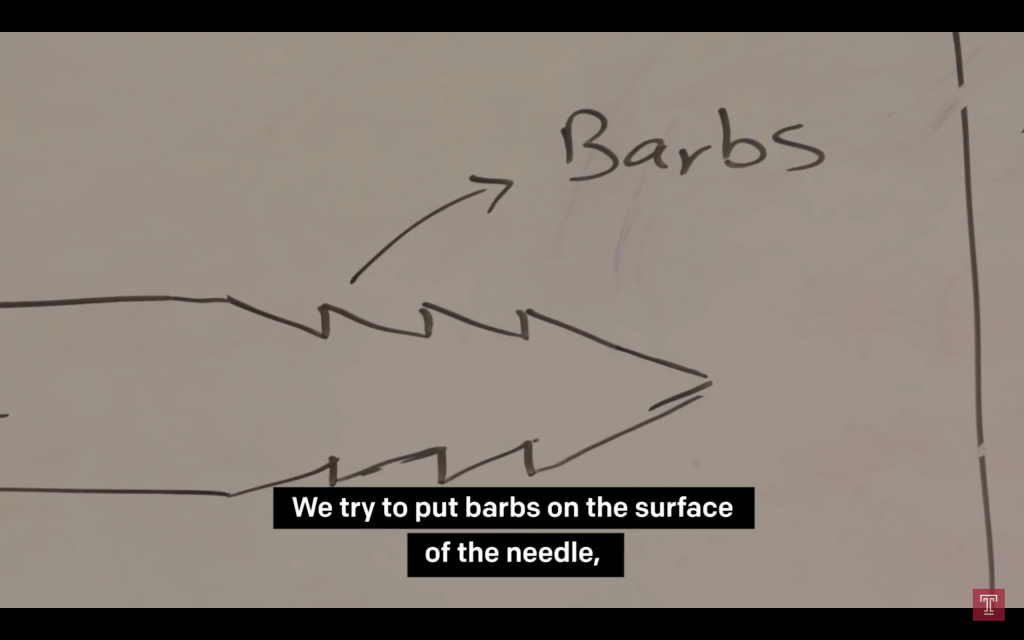Design for additive manufacturing (DfAM) tools, such as generative design programs and topology optimization, are changing the way our world looks. Airplane parts are now more organic-looking, taking on the shape of thick vines overarching a space, rather than the conventional blocks and right-angels. And, seeking inspiration for new materials and devices, researchers are increasingly taking cues from nature.
From the innate toughness of a conch shell, to the iridescent quality of butterfly wings, bioinspired designs have been put to a range of uses, including the development of smart sensors and next generation aircraft.
At Temple University, Pennsylvania, researchers have taken inspiration from the humble honey bee to develop a solution for better patient care.

3D printed surgical needles
Parsaoran Hutapea is an Associate Professor of Mechanical Engineering at Temple. Together with PhD student Mohammad Sahlabadi, the department developed a new design for a surgical needle.

“The whole idea of a 3D printed needle came about six or seven years ago, when we did a project looking at how to improve surgery needles,” explains Hutapea, “The problem with the surgery needle is when you go in, into human tissue, often times the tip will deflect.”
A deflecting tip creates inaccuracies when applying a precise dose to damaged or inflamed tissue. Hutapea continues, “The needle deviates from its planned path on the way to the target, such as a cancerous tissue or tumor.”
Renowned for their stings, honey bees set the perfect example for minimizing potential damage to skin and tissue, and improving needle-point precision.
The stinger in the search
Through studying bees, Hutapea and Sahlabadi found that the stingers are barbed rather than linear like a typical needle. This is the secret to the bee’s ability to cleanly sting an intruder.

Notches on the stinger decrease its insertion and extraction forces, and therefore limit a needle’s ability to curve.
“It’s critical, because if the needle curves, you miss the target,” adds Hutapea.
“With this shape, the curve is limited—it makes it easier to control in a robotics setting.”
So far, the bee-like needles have been 3D printed in a unique polymer mixture. Within the next two to three years, Hutapea and Sahlabadi hope to have the technology to 3D printed a hybrid metal-polymer needle in this shape. Eventually, the goal is also to attain FDA approval for the devices, though it may be some year’s yet before we see the needles on the shelf.
A paper co-authored by Hutapea and Sahlabadi discussing the “Novel design of honeybee-inspired needles for percutaneous procedure” is published online in journal Bioinspiration & Biomimetics.
For more of the latest cutting-edge 3D printing research and other related news subscribe to the 3D Printing Industry newsletter, follow us on Twitter, and like us on Facebook.
Search and post 3D Printing Jobs for opportunities and new talent.
Vote for research team of the year and more in the 2018 3D Printing Industry Awards.
Featured image shows the 3D printed needle entering a gel made to mimic human tissue. Photo via Temple University



